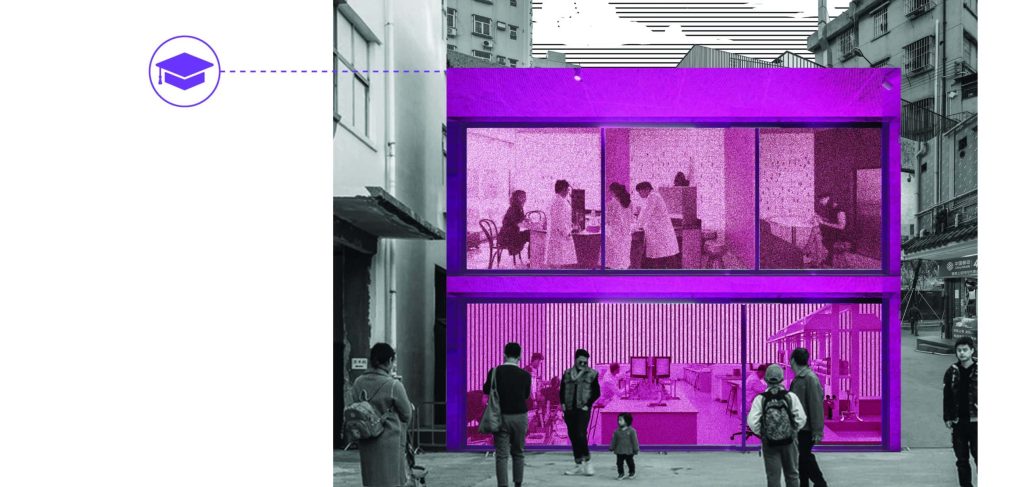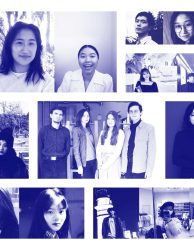
univer(C)ity
Team
Name: Adisunu Alui
Nationality: Indonesia
Institution / Company: Studio Anchor
Instagram: @adisunualui
LinkedIn: Adisunu Alui
Name: Mahdi Faiq
Nationality: Indonesia
Institution / Company: Studio Anchor
Instagram: @mahdifaiq
LinkedIn: Mahdi Faiq
Name: Haris W. Pratama
Nationality: Indonesia
Institution / Company: Fractals
Instagram: @haris.w.pratama
LinkedIn: Haris W. Pratama
-EDITORIAL PICK of Community 2050 Competition | Category: Professional
[Background & Issue]
When it comes down to the driving factor, innovation basically is the sole manifestation of mankind’s fear and ambition to survive and evolve regardless of whether the aftermaths are positive or negative. Maybe fundamentally, the idea of survival of the fittest seems to be the only reason why mankind still strives today, and the goal of every innovation is the never-ending improvements of human’s life through research and development activities.
In the scope of urban design, how might we set up a community of ‘innovators’ as part of the daily inhabitants of a neighbourhood? The role of cities focused on innovation then should be pointed towards the interactive relationship between researchers and the research subjects, which is the people themselves as the end-users.
[Proposition]
Within the various spectrum of urbanism architecture, univer(C)ity tries to explore the notion of city planning through the lens of university planning. University typology seems to be the most closely related based on the scale and most importantly in terms of the facilities which are mostly related to research and development — thus university is the predecessor of the innovation ecosystem in the built environment. The key here is to think of composing the main components of a city’s anatomy through university programming as the core building blocks for city planning.
[Design]
Instead of conventional zoning, specific faculties derived from the typical university programming become the basis for each sub-district zoning. The idea is to divide the whole Shenzhen High Tech Park into distinct areas based on the most prominent research and development fields which eventually become the unique identities for each of the sub-districts.
Each of these faculties will have a unique anchor facility that differs the urban activity of each area in a form of Urban Laboratories where Researchers are put in various situations with diverse people doing specific activities in the urban space. The following urban laboratories are divided based on four R&D fields which are most prominent in the idea of a high-tech society, such as [1] Public Libraries of the Information & Communication Technology field; [2] Sports Hub of the Healthcare Technology field; [3] Urban Farming of the Food Technology field; and [4] Public Market of the Financial Technology field.
As for the densification part, due to the nature of office building activity which tends to happen only within the indoor spaces, generating a plural background of inhabitants through mixed-use buildings is a must to generate a lively, diverse neighbourhood. In this case, the base building blocks inspired by the Barcelona superblock are used as a study case combined with the existing transit network in the High Tech Park area which allows a high-density urban fabric with great qualities of spaces for people. It is obligatory to generate a situation where there will be a lot of people having diverse activities in the outdoor spaces of the urban fabric.
Through a series of Research & Development outposts spread all over the vibrant points of each sub-district area, the researchers can actually blend in as the city’s regular inhabitant, not merely come and go just for the sake of ‘working’ conventionally.
[Result/Impact]
Within the envisioned socialist economy, imagine having the citizens equally incentivised by the government ranging from the people coming of age to the professional researchers as long as they took part in one of these Research & Development fields as a way to serve the country as well as to express their passions.
In conclusion, the Innovative Ecosystem is not all about the spectacles of high-end technologies and skyscrapers; rather, it should be about how we might trigger and develop the innovative nature of people living in a neighbourhood.
Eventually, the urban fabric will have the research grounds as the new form of city centres.
#University #Research&Development #UrbanLaboratory #Faculties #CampusCity #Researcher
















